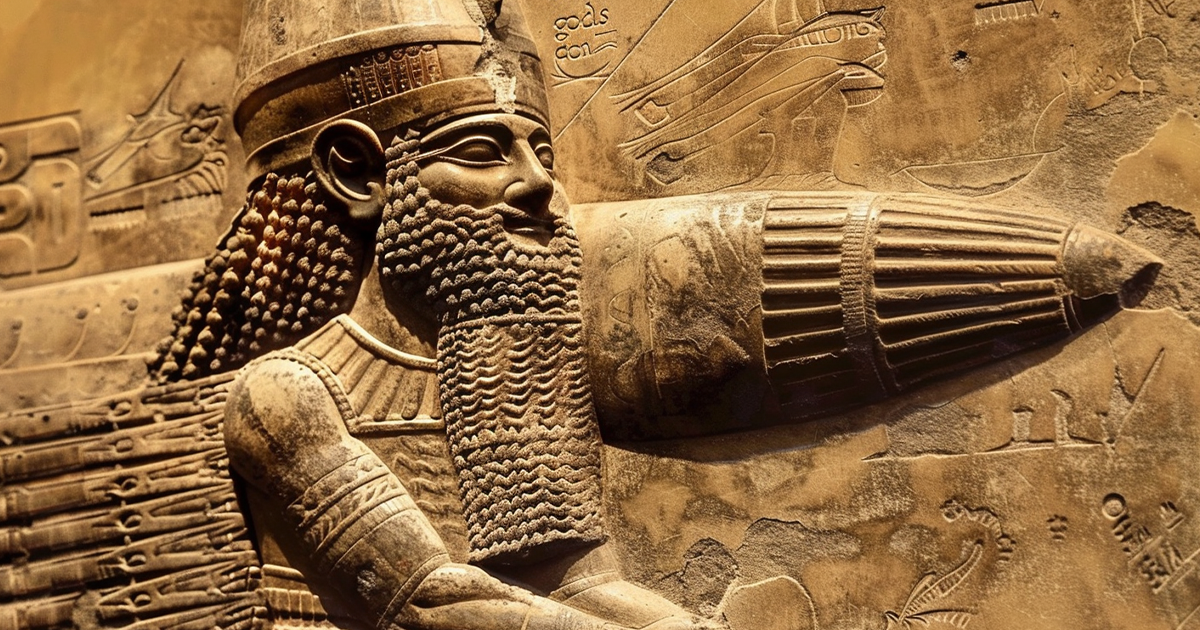Exploring the enigmatic relics of Sumerian civilization reveals a fascinating array of artistic expressions and artifacts that continue to captivate scholars today. One alluring aspect lies in the depictions of “bearded deities” embarking on journeys within structures that evoke images of spacecraft. While traditional analysis views these portrayals as symbolic, unconventional perspectives propose an alternative interpretation, suggesting they represent encounters with advanced extraterrestrial civilizations.
Throughout Sumerian art, celestial beings and deities are frequently shown with prominent beards, symbolizing attributes of wisdom and power. These divine entities are depicted in chariot-like conveyances embellished with wings and intricate embellishments. While conventional interpretations see these artistic representations as symbolic of divine supremacy, radical viewpoints present a more literal perspective—that they chronicle authentic interactions with beings from distant worlds.
The notion of Sumerian deities navigating the skies in spacecraft-like structures challenges standard interpretations of ancient legends and prompts a reexamination of our understanding of ancient societies and their interactions with extraterrestrial beings. From this angle, these spacecraft could symbolize advanced technology operated by visitors from distant galaxies, with the bearded gods potentially acting as messengers or envoys from those remote realms.

The striking parallels between Sumerian depictions and modern reports of extraterrestrial encounters are noteworthy. Both accounts describe encounters with beings possessing advanced knowledge and technology, as well as narratives depicting interactions between humans and beings from other worlds. Additionally, the prevalence of spacecraft-like structures in Sumerian art mirrors similar motifs found in various cultures globally, suggesting a shared narrative of ancient encounters with advanced beings.
While speculating about ancient interactions with extraterrestrial civilizations may persist, it sparks a reconsideration of our understanding of human history and our place in the vast cosmos. Whether seen as symbolic metaphors or indications of actual encounters, the portrayals of bearded deities in spacecraft-like vehicles in Sumerian art provide deep insights into humanity’s enduring pursuit to unravel the mysteries of the universe.
As we continue to analyze and interpret these ancient masterpieces, we are reminded of the limitless pathways for exploration embedded in the annals of human history. Whether the bearded gods of Sumer were mythical creations or travelers from realms beyond our own, their depiction in ancient art offers a profound contemplation on the profound enigmas that intersect among mythology, art, and our understanding of the cosmos.
